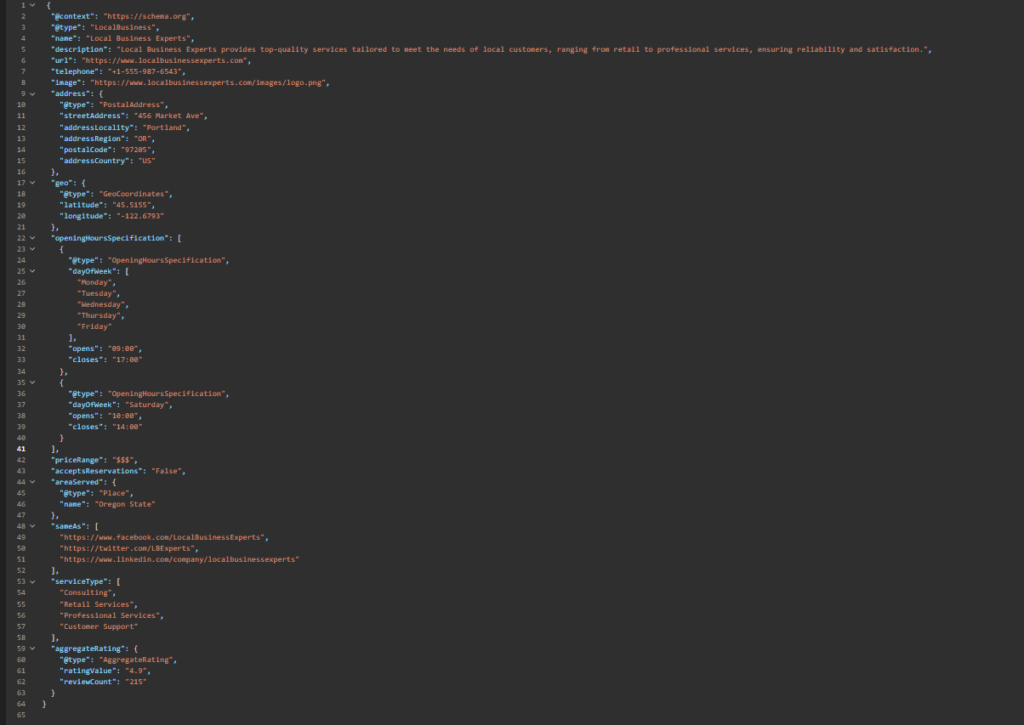Are you utilizing the full power of schema markup to increase your website’s visibility in the SERPs in 2025?
When it comes to SEO, staying ahead means more than just optimizing keywords and creating quality content. Proper schema implementation can unlock better SEO performance and drive rich snippets, positioning your content as the ultimate guide.
Understanding Schema Markup

Definition and Its Role in Enhancing Search Engine Understanding
Schema markup is a form of microdata that creates an enhanced description (rich snippet), which appears in search results. It helps search engines understand the context of your content, providing better results for users.
How Schema Markup Improves SEO and Generates Rich Snippets
By adding schema markup to your HTML, you improve the way your page is represented in SERPs. Rich snippets can include images, ratings, or additional information, making your listing more attractive and informative, which can lead to higher click-through rates (CTR).
Overview of Schema Formats: JSON-LD (Recommended), Microdata, RDFa
- JSON-LD: Recommended by Google, it’s easy to implement and doesn’t interfere with your HTML code.
- Microdata: Embeds directly into HTML tags, can clutter your code.
- RDFa: Adds attributes to HTML tags, integrating metadata into your web pages.
Key Benefits: Improved CTR, Structured Data, and Search Visibility
- Improved CTR: Rich snippets are more engaging to users.
- Structured Data: Helps organize your site’s information.
- Enhanced Visibility: Stand out in SERPs with detailed listings.
Choosing the Right Schema Type
Overview of Common Schema Types: FAQ, Product, LocalBusiness, etc.
- FAQPage: For pages with frequently asked questions.
- Product: Ideal for e-commerce product pages.
- LocalBusiness: For businesses with physical locations.
- Article: For news articles and blog posts.
Understanding Schema.org’s Hierarchy for Effective Selection
Schema.org provides a structured hierarchy of schemas. Understanding this hierarchy helps you select the most specific and relevant schema types for your content.
Exploring Industry-Specific Schemas for Niche Applications
Industries like healthcare, education, and entertainment have specific schemas (e.g., MedicalEntity, Course, Movie) to represent their unique content accurately.
Differentiating Required vs. Recommended Properties for Robust Markup
- Required Properties: Essential for the schema to be valid.
- Recommended Properties: Enhance the richness but aren’t mandatory.
JSON-LD Implementation

Step-by-Step Process for Setting Up JSON-LD Markup
- Identify the Relevant Schema: Use Schema.org to find the right type.
- Generate the JSON-LD Code: Use tools like Google’s Structured Data Markup Helper.
- Customize the Code: Replace placeholders with your content.
- Validate the Code: Use Google’s Rich Results Test.
- Implement on Your Site: Insert into your HTML.
Ideal Placement of JSON-LD in HTML for Maximum Efficiency
Place the JSON-LD script in the <head> or at the end of the <body> section to make sure search engines can read it efficiently.
Understanding Code Structure and Syntax for Seamless Integration
- @context: Should be “https://schema.org“.
- @type: Specifies the schema type.
- Properties: Key-value pairs of your content.
Best Practices to Guarantee a Clean and Effective Markup
- Keep your code minimal and focused.
- Regularly update the markup with content changes.
- Avoid duplication of schema types on the same page.
Essential Schema Properties
Overview of Required Elements for Basic Functionality
For a Product schema:
- name
- image
- description
Recommended Properties to Enhance Richness and Detail
- aggregateRating
- offers
- brand
Relationship Between Properties for Structured Coherence
Make sure that properties logically connect (e.g., offers should include price and availability).
Formatting Guidelines to Make Sure of Valid and Readable Values
- Use ISO 8601 date formats.
- Guarantee URLs are absolute.
- Maintain consistent units of measurement.
Local Business Schema Implementation

Key Details to Include: Business Name, Address, Phone Number, and More
- name
- address
- telephone
- openingHours
Proper Formatting for Contact Information and Opening Hours
- Use PostalAddress for structured addresses.
- Format opening hours like “Mo-Fr 09:00-17:00”.
How to Include Department and Multi-Location Data
- Use department property for internal departments.
- Create separate schema entries for each location.
Examples of Effective Local Business Schema Implementation
{
“@context”: “https://schema.org”,
“@type”: “LocalBusiness”,
“name”: “Example Business”,
“address”: {
“@type”: “PostalAddress”,
“streetAddress”: “123 Main Street”,
“addressLocality”: “Anytown”,
“addressRegion”: “CA”,
“postalCode”: “12345”
},
“telephone”: “+1-555-555-5555”,
“openingHours”: “Mo-Fr 09:00-17:00”
}
Testing and Validation
How to Use Google’s Rich Results Test to Validate Schema Markup
- Go to Rich Results Test.
- Enter your page URL or code snippet.
- Review and fix any errors or warnings.
Overview of Popular Schema Validation Tools
- Schema Markup Validator: By Schema.org.
- Bing Webmaster Tools: Offers a markup validator.
- Yandex Structured Data Validator: For additional testing.
Common Errors in Schema Implementation and How to Fix Them
- Missing Required Fields: Add all mandatory properties.
- Invalid Field Values: Makes sure data types match schema definitions.
- Syntax Errors: Check JSON-LD formatting.
Techniques for Monitoring Schema Performance Over Time
- Use Google Search Console to monitor rich results.
- Set up alerts for any detected issues.
- Regularly review performance metrics.
Advanced Implementation Techniques
How to Implement Multiple Schema Types on a Single Page
- Include multiple JSON-LD scripts.
- Guarantees each schema type is relevant to the page content.
Benefits and Methods of Using Nested Schemas
Nested schemas allow you to represent complex data relationships, enhancing the richness of your markup.
Strategies for Dynamic Schema Generation for Large-Scale Sites
- Use CMS plugins or extensions.
- Implement server-side rendering for schema data.
- Employ tag management systems.
Using Templates for Consistent and Scalable Implementation
Develop standardized templates for different content types to maintain consistency.
WordPress Integration
Manual Methods for Implementing Schema in WordPress
- Add code snippets to the header.php or footer.php files.
- Use the Code Snippets plugin for safer code management.
Overview of Popular Plugins Like Rank Math and Schema Pro
- Rank Math: Offers extensive SEO features, including schema markup.
- Schema Pro: Specializes in adding schema to your site with ease.
How to Integrate Schema with Themes for Streamlined Functionality
- Modify theme templates to include schema.
- Use child themes to prevent updates from overwriting changes.
Best Practices for Placing Schema Code in WordPress
- Place JSON-LD in the <head> section.
- Avoid plugin conflicts by disabling redundant features.
Common Implementation Mistakes

Misuse of Properties Leading to Invalid Markup
- Using properties irrelevant to the schema type.
- Mixing data types incorrectly.
Neglecting Required Fields and How It Affects Performance
- Missing fields can prevent rich snippets from displaying.
- Always check schema requirements.
Examples of Incorrect Markup Structures and Solutions
Incorrect:
{
“@context”: “https://schema.org”,
“@type”: “Product”,
“name”: “Example Product”
// Missing comma and other required properties
}
Corrected:
{
“@context”: “https://schema.org”,
“@type”: “Product”,
“name”: “Example Product”,
“image”: “https://example.com/image.jpg”,
“description”: “A great product.”
}
Challenges in Managing Updates and Staying Compliant
- Schema guidelines change; stay updated via Schema.org.
- Regularly audit your markup for compliance.
Maintenance and Optimization
Importance of Regular Validation Checks to Maintain Accuracy
- Schedule periodic checks.
- Use automated tools when possible.
Updating Schema with Content Changes to Guarantee Relevance
- When updating content, also update the schema.
- Make sure that dates, prices, and availability are current.
Techniques for Monitoring Performance and Resolving Issues
- Analyze CTR and impressions for pages with rich snippets.
- Address any sudden drops in performance promptly.
Managing Schema Evolution to Align with Emerging Search Trends
- Keep an eye on new schema types.
- Adapt your strategy to include innovative markup opportunities.
Schema markup is more than a technical SEO tactic—it’s a powerful way to communicate with search engines and enhance your online presence. In 2024, leveraging schema markup is essential for staying competitive. By following this guide, you’re well on your way to mastering schema implementation.
Ready to elevate your SEO game?
Check out our blog! Or contact us for professional schema implementation services.





